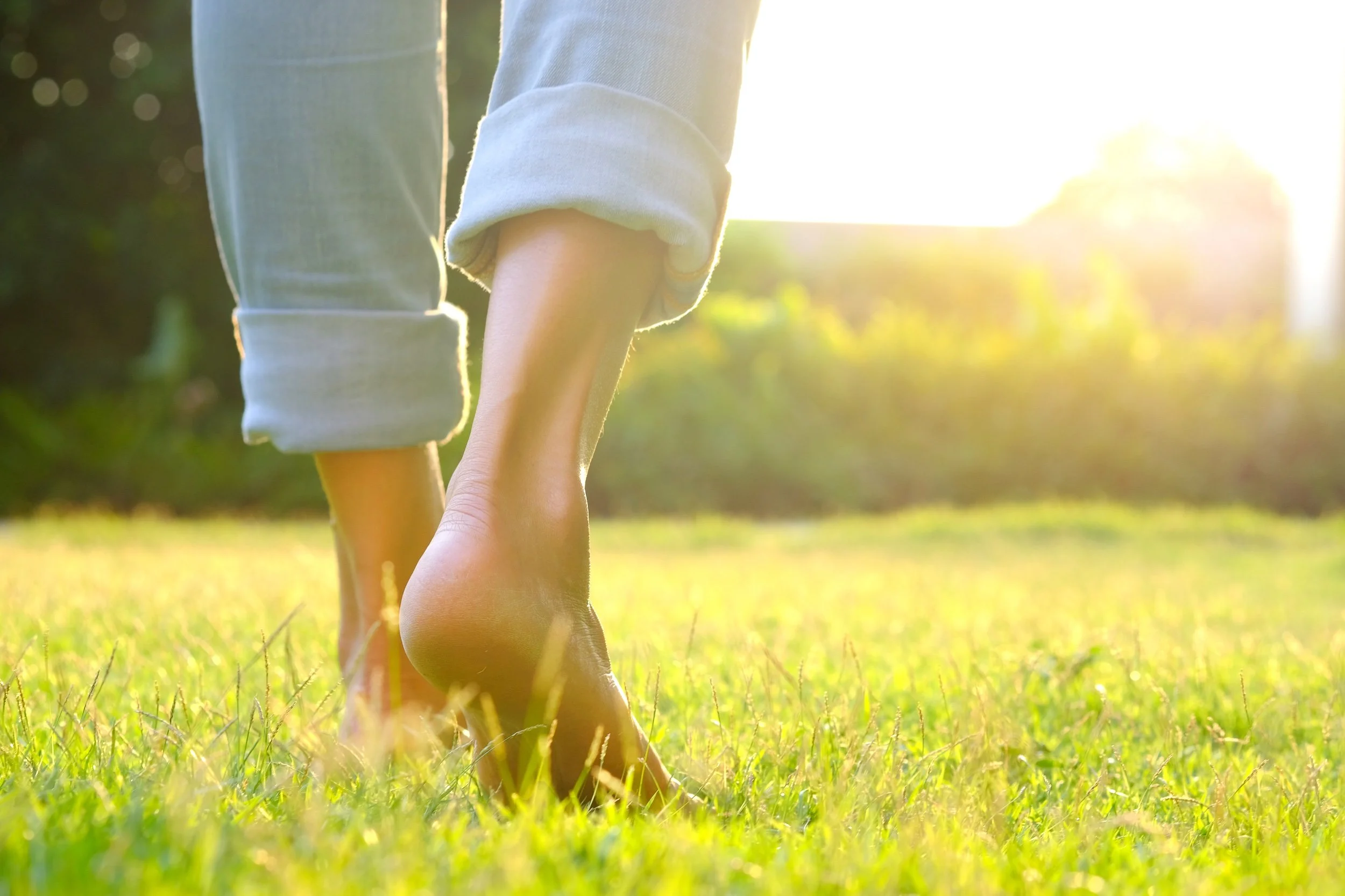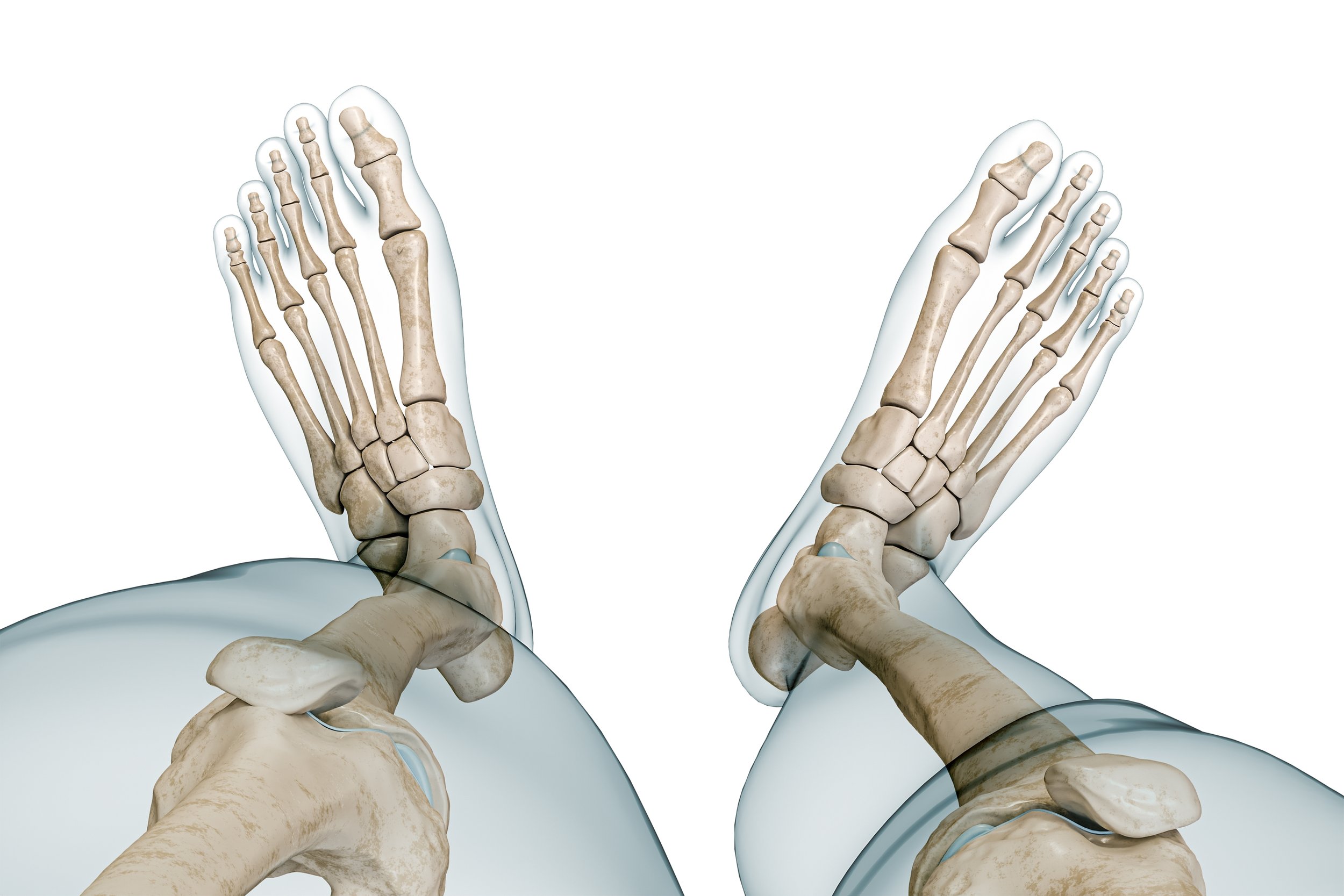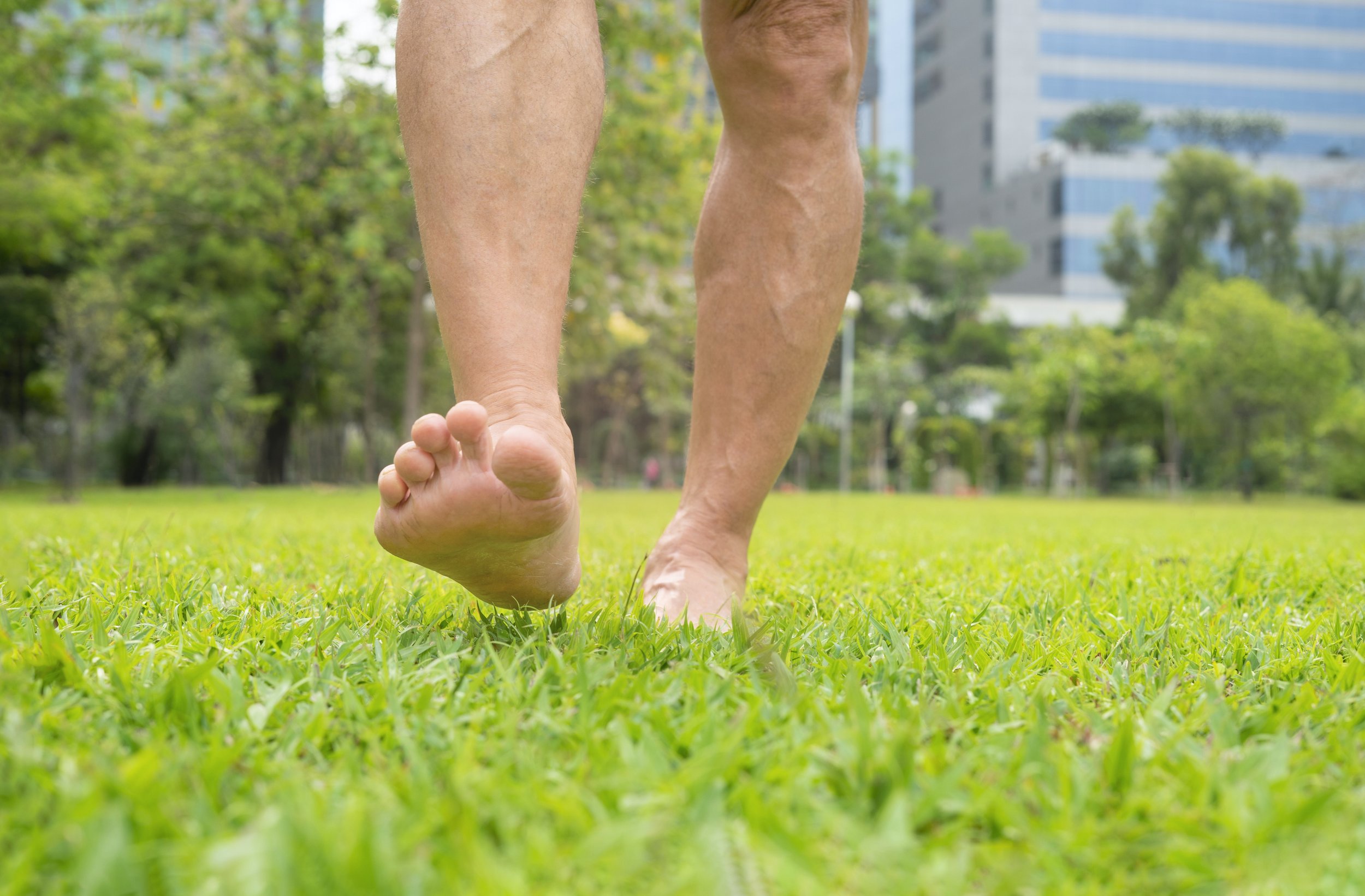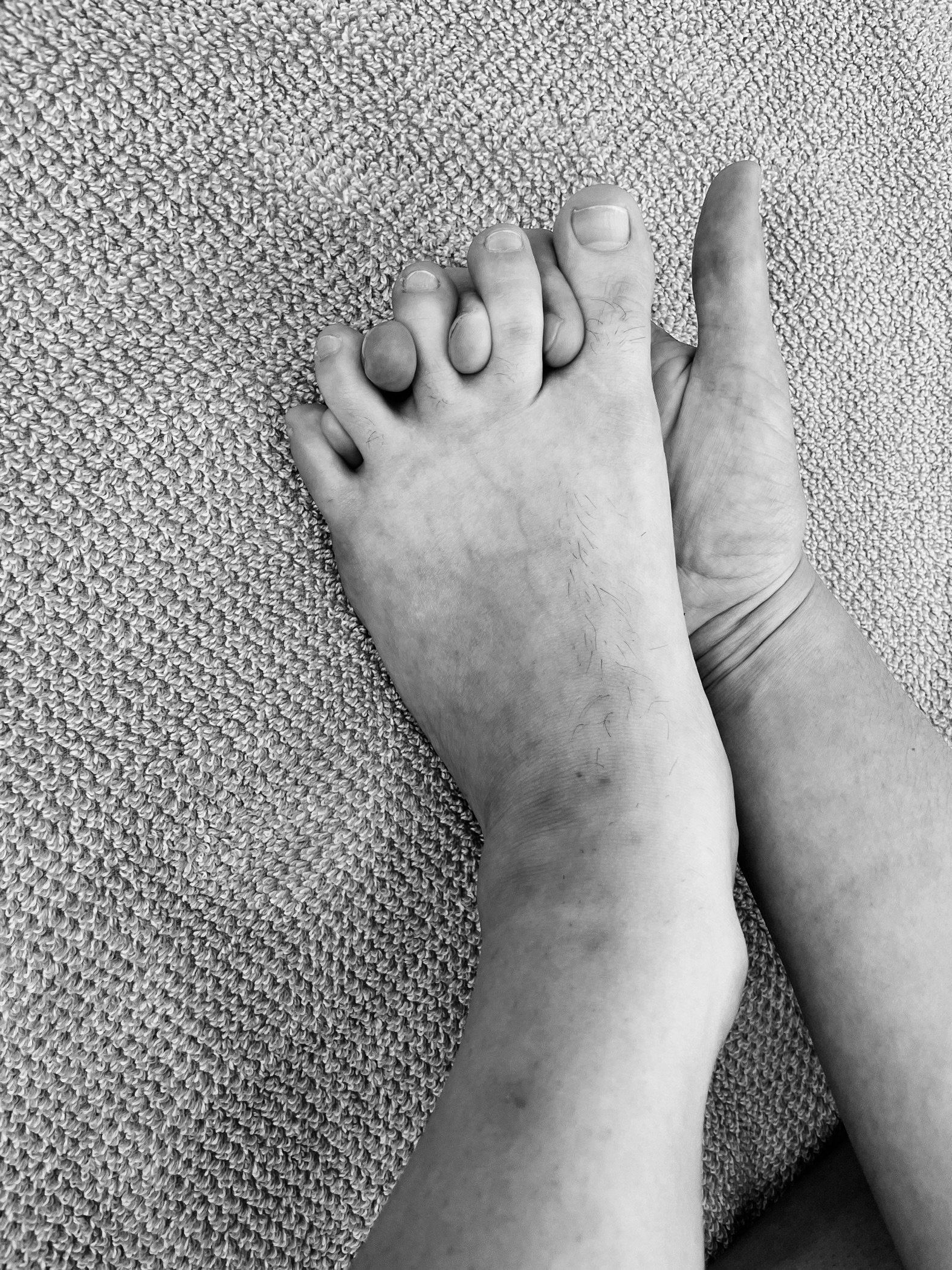This is a question we often hear. Summertime is a practical choice for letting your bare feet land on the surface of your back yard, sandy beach or puttering around the house.
So, is it ok to go barefoot? Is there an ideal amount of time to let our feet be free? Is there a risk to being shoe-free? That all depends. How do your feet feel? Do you suffer with foot pain? Do your feet feel relaxed or squeezed tight while wearing shoes? Answering these questions may help in setting your feet & body up for success.
Let’s look at the anatomy.
25% of your body’s bones exist in your feet. 26 in each foot so 52 bones out of a total of 206 bones found in the body. There are just as many nerve endings in the feet as there are in the hands. Architecturally, the feet are very similar to the hands. However, the natural frame of feet suggests that they are truly built to absorb & disperse pressure.
Proof of their ‘pressure function’ lies in the fact that we’ve evolved to walk on our feet all day.
Our feet have been structurally engineered by Mother Nature herself to support the weight of our upright, moving bodies. According to science, the only difference is that we have lost our ability to grasp with our big toe. ‘Since we are no longer tree climbers, our foot has lost its handling capabilities in order to become a platform for an upright body. This does not mean, however, that the toes were designed to be inactive. An infant’s foot has twenty times the toe-grasping capacity of a shoe-wearing adult. And in shoeless cultures, people retain the prehensile abilities of their feet throughout adulthood, using them for sewing and even threading needles.’ ~ Trail Guide to the Body
Our feet are often an afterthought in our busy lives. Many of us don’t consciously think or care for our feet until there is an ache in their heel, a pinch in the sole, or severe lower leg & foot fatigue. For an area of our body that is so architecturally relevant to the wellbeing of our whole body, we often don’t give our feet, the time, space & rest they need to translate positive energy lines throughout the whole of the body.
Movement of the foot & ankle or lack thereof can affect function further up the body. As RMT’s we will often look at your standing posture as part of our assessment. Subtle resting states of the feet can tell us a lot about your body. When you stand either ‘toes in’ or ‘toes out’, it can offer us insight into what is happening at the knees, hips & lower back. When we look at your feet, we take a whole-body approach, because the whole body is connected after all.
As health care providers, we want to encourage our patients to literally ‘stand on their own two feet’ but we put our ‘foot down’ when it comes to this notion of barefoot being automatically good for everyone, all the time. While going ‘barefoot’ can be intrinsically stimulating for strength and support within the feet, our modern way of living has not set our feet up for structural integrity at the base level. We wear overly restrictive footwear causing the inhibition of our stabilizer muscles which will ultimately have made a profound impact on our global body structure by the time we hit adulthood. We must work slowly to rebuild the foundation that is our feet.
Prior to adulthood, our babies & toddlers need to have a balance between footwear & going bare foot. In early life, kids are building balance which helps with body & brain development. Wearing shoes too often can stunt that this evolution. If this concerns you than consider consultation with a paediatric physiotherapist.
What to consider if you want to strengthen your feet & shift your wellness long term from the ‘ground up’?
Too much, too soon: pace yourself, look to walk in a meditative manner with bare feet. Avoid walking briskly or running. Start with 5 minutes a day.
Strength to support our frame: do we have the strength in our postural muscles (legs, core, back) to support our bodies? Incorporating strengthening exercises into our routines can help alleviate the stress on the joints in our feet from our body’s weight.
Circulation: in order for our feet to function optimally, they need the nourishment provided through circulation. We can achieve greater circulation with gentle movement, daily walking, warm hydrotherapy & massage.
Osteoporosis: this is a bone density issue so care should be taken to strength train all areas of your body. Having a physiotherapist follow you for a period of 3-6 months may also be of great value with this condition.
Current foot pain issues: there are a myriad of foot pain problems that can assault your body. Big toe arthritis, bunions, gout, hammer toe & stress fractures just to name a few. A very common body-based pain we see in our clinic is Plantar Fasciitis. An inflammation & tightening of the tissue on the bottom of your feet. Often self-massage can be of great value & is frequently recommended for our patients in clinic.
Something for everybody! Two simple & safe ways you can nourish the health of your feet.
GROUNDING
Everyone can benefit from allowing their feet to ground into the earth. While this may sound like complete hippy hodge podge, there are a ton of well-supported scientific studies out there to prove the myriad of health benefits of landing your feet directly into the earth’s surface. See this article to learn more.
HOLD HANDS WITH YOUR FEET
In ‘Every woman’s guide to foot pain relief’, Katy Bowman, suggests to ‘sit in a comfortable position where you can get to your toes easily (crossing one leg over your knee works best). Place one fingertip between the tips of each toe, starting as far away from your foot as possible. Just placing your fingers between your toes will give you a good stretch, but as these muscles begin to restore their length, you can work your fingers further down, until eventually, your fingers ‘hold hands’ with your feet.’ Think of ‘holding hands with your feet’ as Katy suggests in both the literal & figurative sense. Staying mindful of our foot health & sensations can be a useful barometer of the global body.
Can’t use your fingers to intersect with your toes as Katy describes? You can always use small, smooth stones found at your favourite beach to gently stretch & mobilize.
We are here to help you tread lighter in your body & down the road ahead. Don’t hesitate to speak to your RMT about your foot health. We have a wealth of knowledge & a great external referral system to get your feet the care they deserve.







